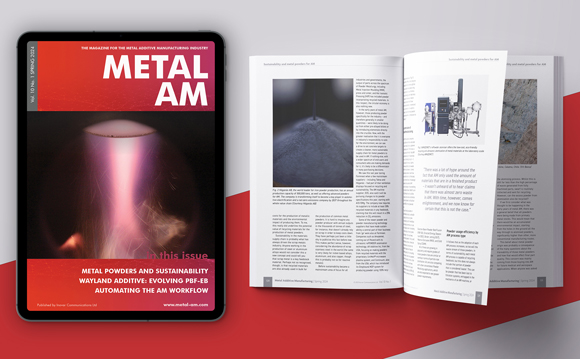Dyndrite enters end-user software market for PBF-LB
November 15, 2022
Dyndrite, headquartered in Seattle, Washington, USA, has announced the release of the company’s first end-user application focused on materials and process development for Laser Beam Powder Bed Fusion (PBF-LB) Additive Manufacturing machines. This new software gives powders, part/process and applications engineers unprecedented power and control over its geometry, build-specific toolpathing and laser parameters.
“After twelve years at a large rocket manufacturer leading the assembly of one of the world’s most advanced AM factories, the Dyndrite engineers and I have been hard at work creating the tool that I wish I had in my prior role,” said Steve Walton, Head of Product, Dyndrite. “The industry previously did not have the software needed to rationally explore the opportunities provided by laser powder bed fusion processes. Users could not efficiently investigate new materials, new build strategies, or even new machine architectures. Dyndrite changes this. This new software provides a flexible new approach, a new data model, innovative and performant APIs, and complete access to toolpath geometry for those who want or need to go further.”
Dyndrite Materials & Process Development was designed to aid users interested in pushing the boundaries of metal laser-based Additive Manufacturing, taking advantage of features within the company’s Accelerated Computation Engine (ACE), including working directly with native CAD data, handling large files, the ability to create shareable build recipes, and improving build quality for various geometric features such as domes, cantilevers, and thin walls.
The software also utilises Dyndrite’s 3D Volumetric Part Segmentation technology, which enables detection of upskins, downskins, inskins and part features that might be missed by 2.5D layer-by-layer-based solutions. Using this new geometry query method, parts, materials and machines can now be quickly qualified using geometric operations to compensate for challenges associated with process physics. 3D Volumetric Segmentation also means users don’t need to manually combine multiple build files again.
“Dyndrite represents the biggest step forward in AM software development for [PBF-LB] in the last decade,” continued Walton. “I’m proud to be a part of the company delivering what the industry has long needed, a toolkit that marries software to hardware and the basis for a powerful, next-generation tool for the emerging AM production market. I’m excited to see the amazing materials and parts the [PBF-LB] community produces, and am exceptionally proud of our engineering team and early customers who helped get us to this point.”
The Dyndrite Materials & Process Development software is available via the company’s early-adopter programme. The application provides off-the-shelf support for the leading PBF-LB Additive Manufacturing machines including those from Acotnity3D, AddUp, EOS, Farsoon, Renishaw, SLM Solutions, Trumpf and others.
Those interested can view the new software at Formnext, Hall 11.0, C61.
















